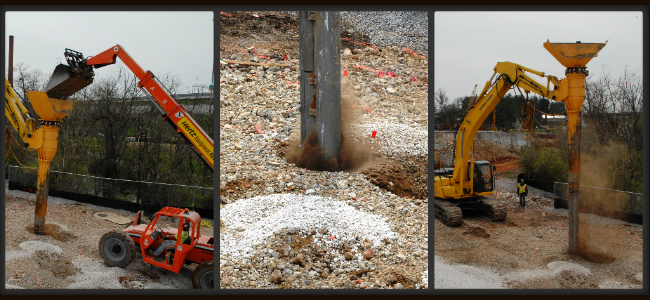The last few decades of have brought impressive technological advances to the means and methods of alternative foundations systems. We found ourselves taking advantage of one of these newer technologies at a brownfield site adjacent the Tennessee River, where we are currently working. We recently finished about 140 geopiers in just a few days. If you haven’t been exposed to this foundation system yet, here is the technical definition:
Geopier System (Rammed Aggregate Piers – RAPs) is a ground improvement method that prestrains and prestresses the soil using soil “replacement” and soil “displacement” technology to strengthen soft soil and loose soil with very dense, stiff, rock columns constructed by heavy equipment crowd force and vertical impact ramming.
The Geopiers we constructed are 30” in diameter and reach moderate depths. Compared to other the foundation systems that we considered, we found the geopiers to be just right for our conditions.
How it’s done is fairly straight forward:
- Form the “geopier shaft” by drilling a hole in the soil.
- Form a geopier “bottom bulb” by ramming a foot or so of crushed rock into the bottom of the geopier shaft, so that the stone is pressed against sides and bottom.
- Layer crushed rock in by successively ramming from the top. The ramming effect creates a very dense, stiff pier that expands the drilled shaft in the process and thus reinforces the soil around it.
There are no complicated steel or concrete connections, only conventional spread footings on top of the geopier, hence the name “intermediate foundation systems.”
Our team found the system effective, especially for our needs: a tight urban site with a need to vertically reinforce the existing soil conditions and thus supporting structures above.


